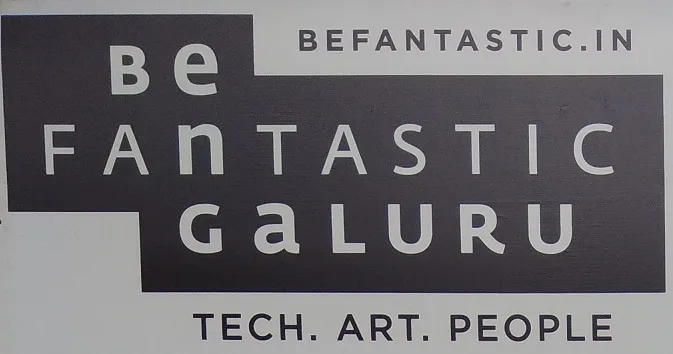How the BeFantastic Festival bridges the worlds of technology and art
Citizens are not just consumers of digital technology, but creators, artists and activists as well — as illustrated at the recent BeFantastic Festival (‘Bengaluru Fantastic’).
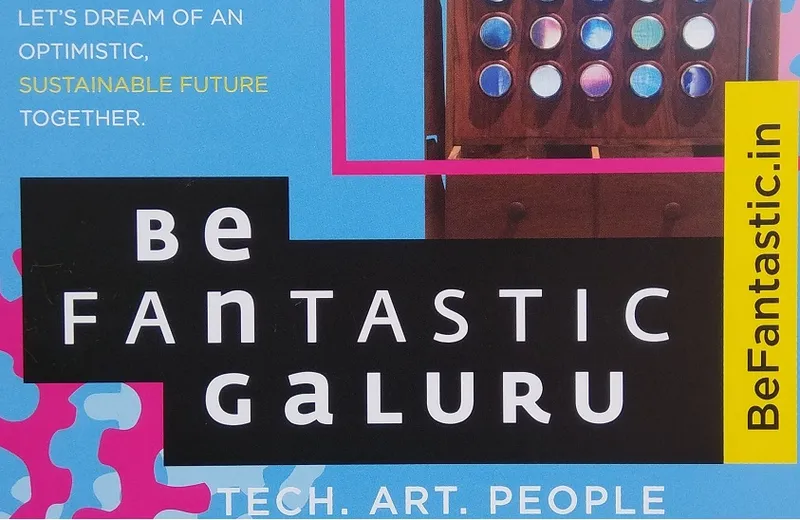
Highlighting the use of technology as art, and to create momentum for a sustainable and inclusive society, the BeFantastic Festival featured interactive artworks by 26 artists from India and overseas. Put together by Jaaga, the displays were featured at the Rangoli Metro Art Centre over the weekend, breathing new energy into the normally traffic-choked M.G. Road area. There were 30 artworks, 11 talks, six workshops and six performances – all with no entry fee.
The activities featured simulations of cubism, personal rainbows, upcycled eco-products, machine learning applied to traditional art designs, drum jams, unicycle dances, music interfaces mimicking gestures, cyborgs in saris, and even an immersive experience of a tornado. Participating artists shared their insights in interviews and in panels on art ecologies, tech ethics, design education, urban spaces, digital experimentation, and green futures.
Technology as art
“Technology is a means of action, like a pencil or a canvas. What counts is the finality, the intention, how to use it,” explains Marguerite Courtel, secretary general of Art of Change 21. The Paris-based organisation links art, innovation and environment to imagine a sustainable future. (See also YourStory’s coverage of the Glass Sutra Studio, India Art Fair, and artist-activist Paramesh Jolad.)
“What is the point of this technology, how many people can benefit, does it make people’s life better? Does it make the planet’s life better? These are the kind of questions we should ask ourselves about new technologies. It’s the same as art, there has to be a deeper meaning,” says Marguerite.
Digital technology is the latest of a series of tools used by artists, according to Jayanth ‘The Sine Painter’ Ramachandra. “To me, my mouse, keyboard and text editor or DAW are what a paint brush, pallet and canvas would be to a painter. The process of learning Javascript and Three.js to make web-based experiences is analogous to a painter doing studies to get the hang of painting,” he jokes.
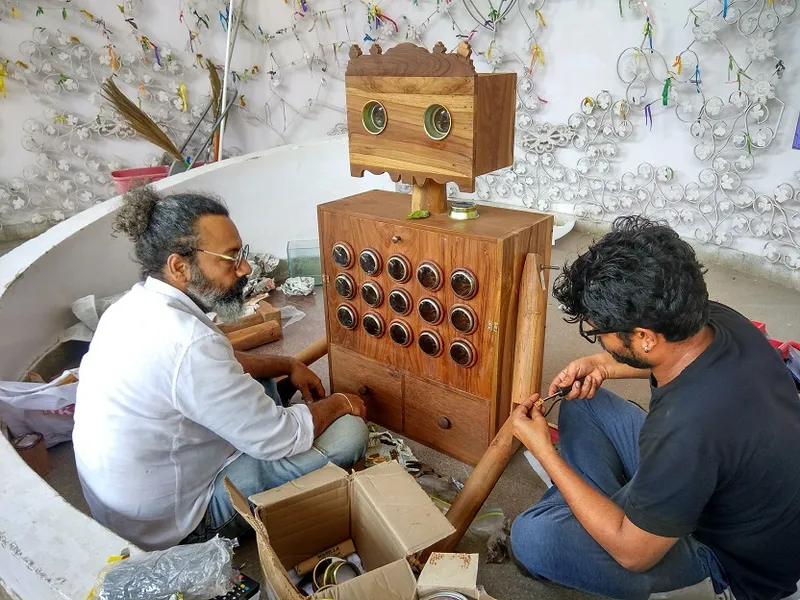
“Given the potential of digital art and the widespread access to devices on which people can consume this art, those interested in expressing themselves through technology are finding all the resources they need online and are using that to create work by themselves,” Jayanth explains. His latest EP, ‘URL Utopias,’ was partly inspired by online digital art communities.
“In my experience, technology, science and art - all three of them - could not exist and would not continue to emerge without intuition, experimentation and creativity,” says Christina Della Giustina, an artist based in Amsterdam. Analog and digital technology should not be treated exclusively either.
Traditional art workflows can be emulated in the digital domain, or be augmented with digital practices, explains creative technologist Harshit Agrawal. He is a graduate of MIT and IIT Guwahati, and has worked on projects in Japan, Korea, Germany and Brazil.
Tech art allows you to dive you into a vibrant world with electronic music, publicity on screens, fashion wearables, lighting, and so on, says Berlin-based artist Jérôme Chazeix.
Technologies are changing faster than ever before. "This is the age where everything is seamless and interdisciplinary. My goal is to use technology to question the mind and to spur inquisitive reasoning for larger audiences,” says transmedia artist Kavita Singh Kale.
Earlier, youth had more access to nature than today’s urban digital generation. “A blend of analogue and digital art can recreate some of these experiences,” says Kavita, a graduate of Delhi University and National Institute of Design.
Collaboration
Indian techies should be encouraged to think about art as an avenue for applying their skills and interests. “A lot of people, from understanding of my own peers, have an interest in doing something interesting with technology. However, that often gets curbed due to lack of exposure and avenues to showcase work,” observes Harshit. More technical institutions need to be open to the idea of tech art as a field and making students aware about it.
“India has very strong technical capabilities, and some of the finest technical institutions and minds in the world. There is also a rich culture of traditional arts that India enjoys, and marrying these is a great opportunity,” says Harshit. “India has a unique set of problems that can be looked at differently through a critical artistic lens, to raise awareness and public dialogue around it,” he adds.
There is much potential in the bridging between the tech art movements in the West and in India. “Tech does not have to be anchored to any continent or place. For the sake of progress and the common good, all discoveries that make a positive difference should be shared between all nations. We need to find common ground, especially given that we are facing the global, common crisis of climate change,” advises Marguerite.
But international collaboration should be organic and not be rushed just for the sake of growth and recognition, Jayanth cautions. “I feel we in India are too eager to be validated by things that are going on in the West, and as a result we tend to sometimes lose ourselves in order to make that happen,” he explains.
On the other hand there’s also the situation where anything stemming from India is seen as a novelty in the West. “We sometimes have a tendency to exploit that to push our work,” Jayanth says.
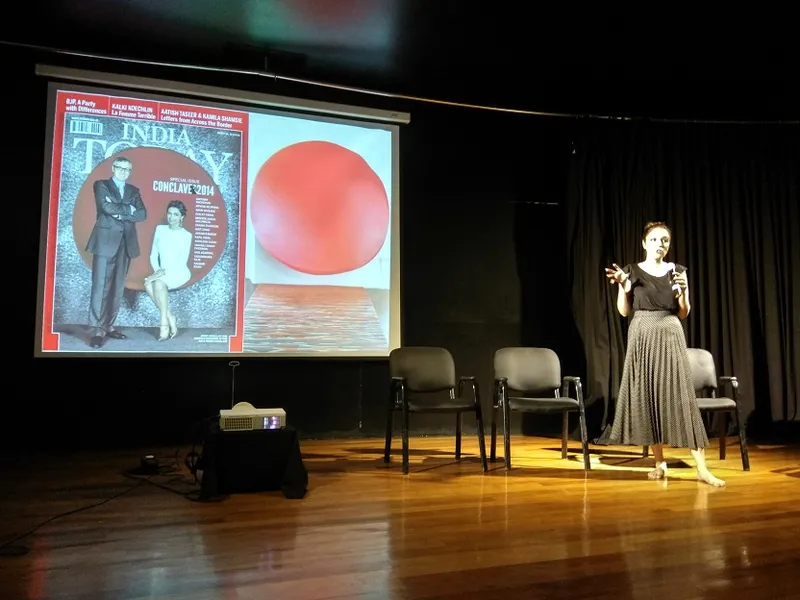
Tech projects and impacts
Technology creates solutions as well as further problems, and the cycle of impacts and even unintended consequences continues anew. “Take the textile industry which is a big part of the Indian economy and a large source of pollution. Can technology help find alternatives such as natural pigments? India is facing lots of extreme environmental problems, and tech can help find some solutions,” advises Marguerite.
For the recent United Nations Climate Change Summit in Bonn (COP23), Art of Change 21 organised an event on the banks of the Rhine called Creative Klima. It was in partnership with the Solar Sound System, an organisation that provides parties with music via a sound system powered by solar energy and even ‘dancing cyclists.’ (See also my photo essays on art and environmental activism from CoP 22 in Marrakech, Climate Chance Summit in Agadir, and Street Art Festival in Jogjakarta.)
Kavita Singh Kale had an exhibit at the festival called ‘Germinate,’ a digital canopy of trees generated by the press of buttons. “To describe the tactile nature of the analogue world, I had interviewed my friends and acquaintances about their childhood memories of their interaction with trees,” she explains.
The ecosystem that is created digitally vanishes when the switches are turned off, a reflection of the impermanence of trees that people have played and engaged with. “Only nostalgia remains, while there is a decline in the trees in urban and rural areas,” says Kavita. The exhibit is also a satirical reflection of the fact that we are at a point where one would prefer to see plants grow quickly with just a few clicks, rather than watering plants and see them grow slowly.
Harshit Agrawal’s art works include augmented handwriting, sketching tools, bungee cords in musical instruments, and AI-enabled art, poetry and music. His project ‘Interwoven’ applies CAD tools to the traditional practice of basket making, and extends to 3D printing of the basket.
“India has an immensely rich and diverse culture, and far reaching forms of knowledge. India and the West can do more to not just co-exist but collaborate with each other and the entire ecosystem,” Christina advises.

Trends
Trends to watch are the rise of 3D tools, collaborative platforms for artists, the Tech4Good movement, and local community formations for digital art. “Tech can be beneficial for a sustainable future and artists can definitely help in its sense. In five to ten years, all-green initiatives will be the new norm,” predicts Marguerite.
“AI has also caught the fancy of the tech art world, given especially how the whole narrative of computers being creative is so captivating in general, even to the audience,” says Harshit. The Ars Electronica festival had the theme of AI in 2017.
There are important ethical issues like bias in AI and deeper fragmentation of society. "As artists, we have a crucial role to make work around these topics,” explains Harshit.
New technologies, right from making coloured pigments and finer brushes to modern day software tools and technologies like AI, have all been deeply influential in how and what we make in art, according to Harshit.
“Art has played a crucial role in raising questions about how our society is functioning and pointing out things outside the norm. I believe that the role of critical art is essential and has been expanding with new technologies,” says Harshit. Technology can open up new universes of creative expression.
Resources
The artists also recommend a range of useful professional websites such as Cabbibo, Processing, Creative Applications, Egill Sæbjörnsson, and Ed Atkins. Festivals to check out new frontiers of tech art are Ars Electronica (Linz) and TransMediale (Berlin).
Artist Tomas Saraceno’s project Aerocene is about how to travel the world using no resources other than the sun. Dan Roosegaarde has created the Smog-Free Project, a machine making diamonds from air pollution. Olafur Eliasson has a solar lamp project called Little Sun, to bring solar light to the 1.1 billion people in the world living without electricity.
Recommended authors for modern art insights are Andy Clark (Natural Born Cyborgs), Donna Haraway, Elizabeth Grosz, Isabelle Stengers, Adrienne Rich, Bruno Latour, Gilles Deleuze, A. N. Whitehead, David Bohm, Helène Cixous, Catherine Clément, Jean Baudriallard (Simulacra and Simulation; The Consumer Society), and Roland Barthes (Mythologies). They come from a wide variety of fields including physics, philosophy and poetry.
Tips and recommendations
The participants also offered tips to aspiring tech artists and the broader tech community. Digital art should be seen as a legitimate means of expression and as something of cultural significance.
“The foundations for the creation, promotion and sustenance of digital art in India are being laid down now. Just dive in head first and start making things, and study the work of artists that inspire you,” Jayanth advises aspiring digital artists.
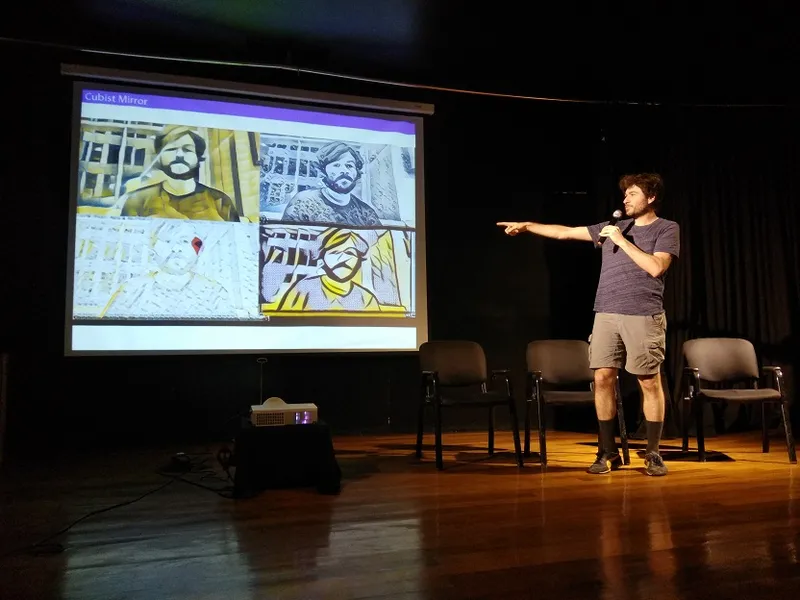
“Be multidisciplinary and factor in environmental and societal concerns in the use of technology, advises Marguerite.
“I do not think that it is solely the development of technologies that can solve our problems. Rather, we also need to question our understanding of ourselves. On many scales, a process of transformation is crucial right now,” urges Christina.
“We need to empower the next generation of people to go for what they are curious about, what they believe in, and what they care for,” she says. “Pursue your curiosity. Don’t judge yourself by success, but by what works, what doesn’t, and by what you learn. This process is continuous, miraculous, and most valuable,” Christina advises.
“We also need more hybrid collaboration with humans and non-humans on all levels. Algorithms are actors, concepts are organisms, and practice is generative,” she sums up.
“Reflect upon what message you want to send to people with your work. Start working with open source communities, build a local community, and participate in get-togethers to bounce ideas with, share early, and feel secure in your choice of work,” Harshit advises.
“I believe art is one of the most powerful ways of communicating. Nothing satisfies people more than that moment where they get to reflect upon something, get shown different perspectives, make something personally meaningful for themselves, and express themselves in different ways. I want to make more of these moments,” says Harshit.
With more festivals like BeFantastic, digital art is bound to become popular, broad-based and immersive. “Tech can also be a force that stimulates and expands creativity beyond normal boundaries. More global, green and social aspects will be factored into all manner of initiatives,” signs off Marguerite.
